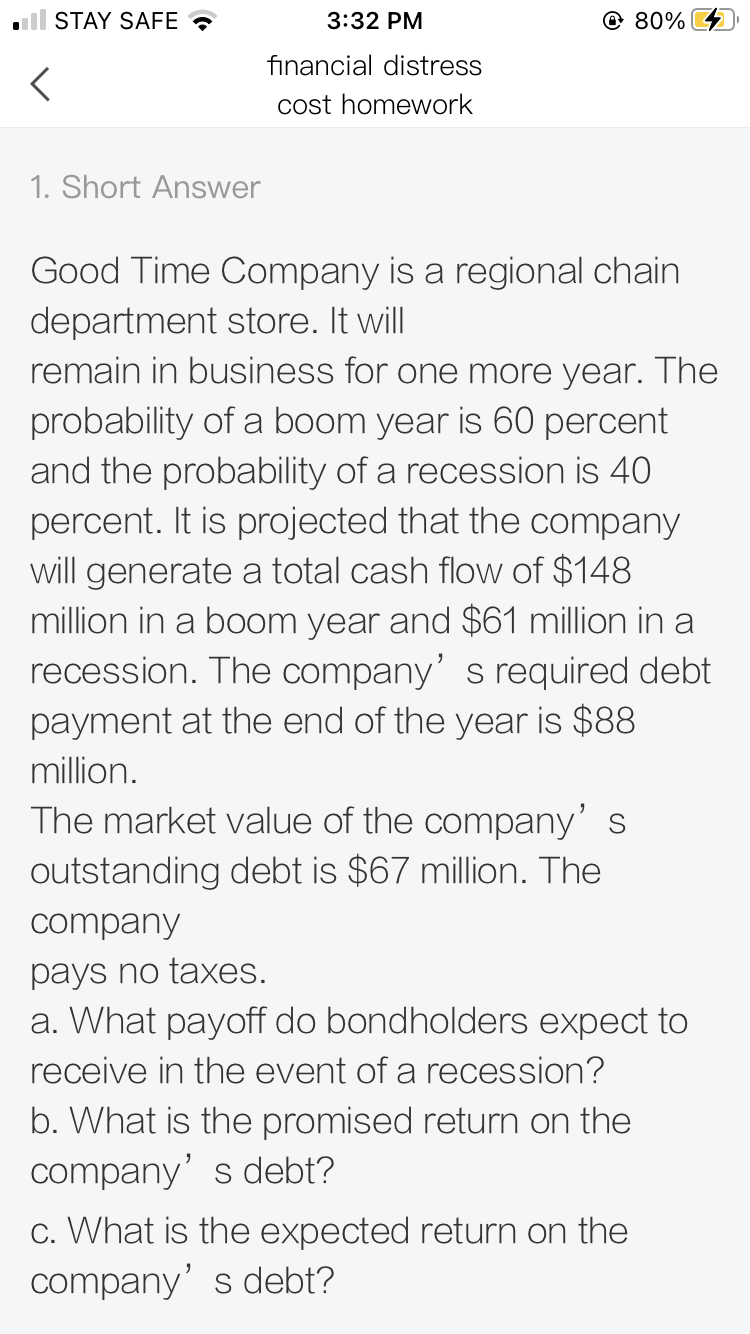02) Overnight Publishing Company (OPC) has $2.5 million in excess cash. The firm plans to use this cash either to retire all of its outstanding debt or to repurchase equity. The firm’s debt is held by one institution that is willing to sell it back to OPC for $2.5 million. The institution will not charge OPC any transaction costs. Once OPC becomes an all-equity firm, it will remain unlevered forever. If OPC does not retire the debt, the company will use the $2.5 million in cash to buy back some of its stock on the open market. Repurchasing stock also has no transaction costs. The company will generate $1,300,000 of annual earnings before interest and taxes in perpetuity regardless of its capital structure. The firm immediately pays out all earnings as dividends at the end of each year. OPC is subject to a corporate tax rate of 35 percent, and the required rate of return on the firm’s unlevered equity is 20 percent. The personal tax rate on interest income is 25 percent, and there are no taxes on equity distributions. Assume there are no bankruptcy costs. a. What is the value of OPC if it chooses to retire all of its debt and become an unlevered firm? b. What is the value of OPC if is decides to repurchase stock instead of retiring its debt? (Hint: Use the equation for the value of a levered firm with personal tax on interest income from the previous problem.) c. Assume that expected bankruptcy costs have a present value of $400,000. How does this influence OPC’s decision?
02) Overnight Publishing Company
(OPC) has $2.5 million in excess cash. The firm plans to use this cash either to retire
all of its outstanding debt or to repurchase equity. The firm’s debt is held by one
institution that is willing to sell it back to OPC for $2.5 million. The institution will not
charge OPC any transaction costs. Once OPC becomes an all-equity firm, it will remain
unlevered forever. If OPC does not retire the debt, the company will use the $2.5 million
in cash to buy back some of its stock on the open market. Repurchasing stock also has
no transaction costs. The company will generate $1,300,000 of annual earnings before
interest and taxes in perpetuity regardless of its capital structure. The firm immediately
pays out all earnings as dividends at the end of each year. OPC is subject to a corporate
tax rate of 35 percent, and the required
20 percent. The personal tax rate on interest income is 25 percent, and there are no taxes
on equity distributions. Assume there are no bankruptcy costs.
a. What is the value of OPC if it chooses to retire all of its debt and become an unlevered
firm?
b. What is the value of OPC if is decides to repurchase stock instead of retiring its debt?
(Hint: Use the equation for the value of a levered firm with personal tax on interest
income from the previous problem.)
c. Assume that expected bankruptcy costs have a present value of $400,000. How does
this influence OPC’s decision?
Answer for 2nd question

Trending now
This is a popular solution!
Step by step
Solved in 4 steps with 4 images


